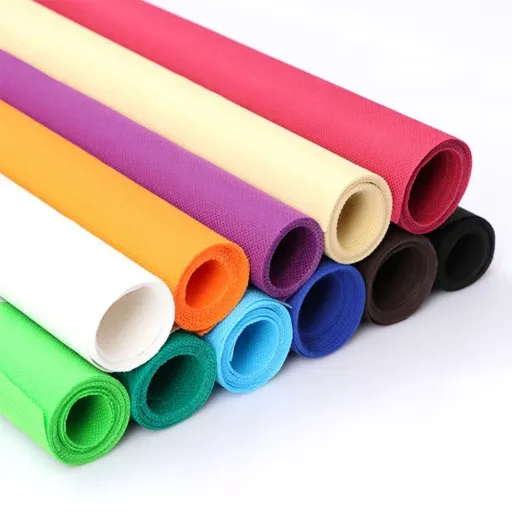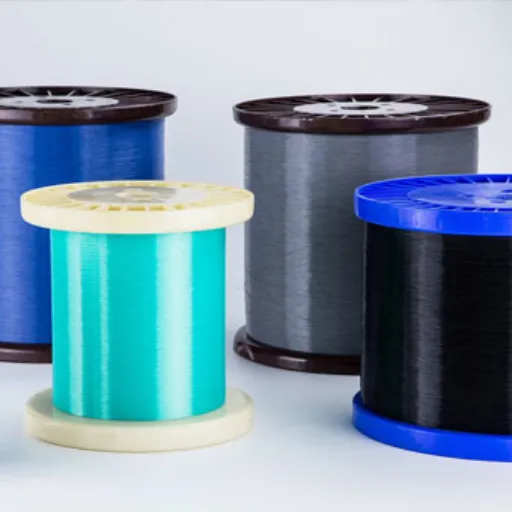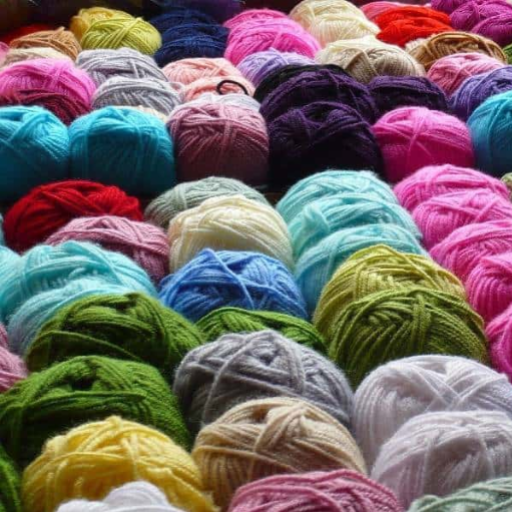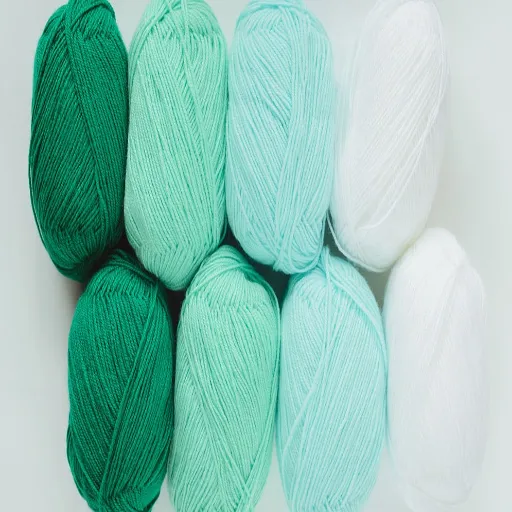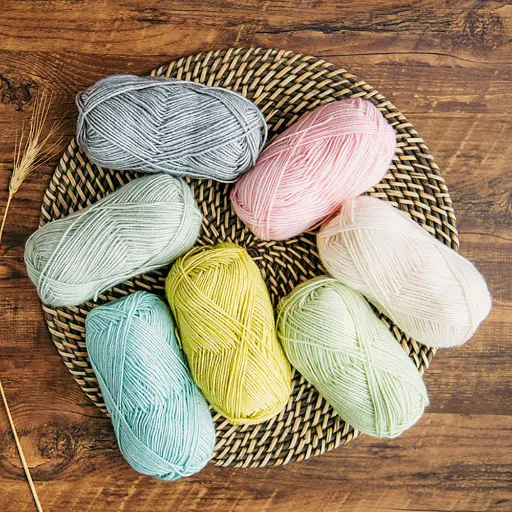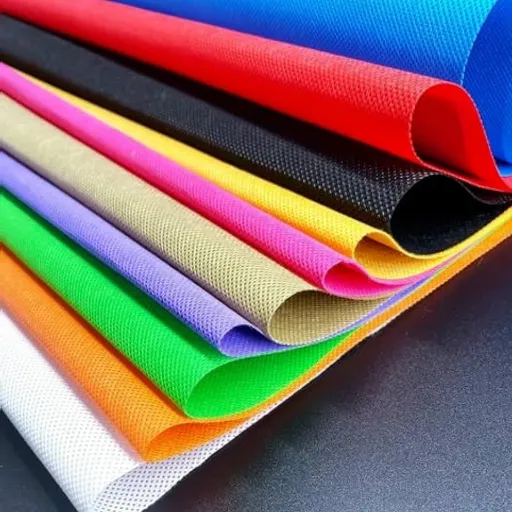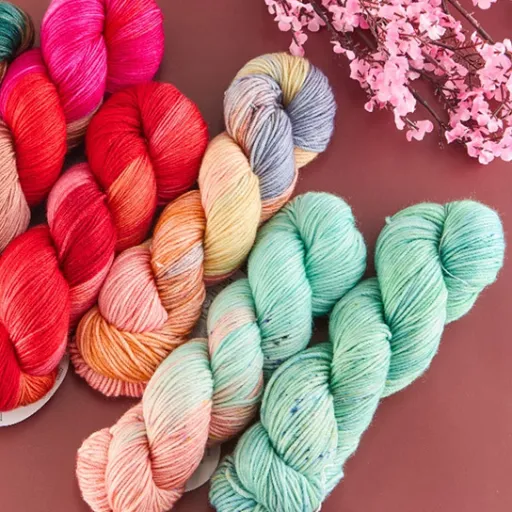Acrylic fabric has been considered one of the most sought-after synthetic materials across the clothing spectrum and household goods for its utility, nice elasticity properties, and affordability. Questions often arise about the ability and stretchiness of acrylic fabrics: Do the fabrics have sufficient stretch to be used in particular clothing, or do they not yield enough flexibility for specific uses? This blog post will explore the unique properties of acrylic fabric, examining its structure, applications, and whether it can offer the sought-after stretch for a diverse range of individuals. Feel free to keep scrolling if textiles are what you care for, feel inclined in textile design, or are just interested in grabbing the next knitted sweater. Here is some valuable insight into the behavior of acrylic fabric and why it remains a favored option in the textile industry.
What is Acrylic Fabric?
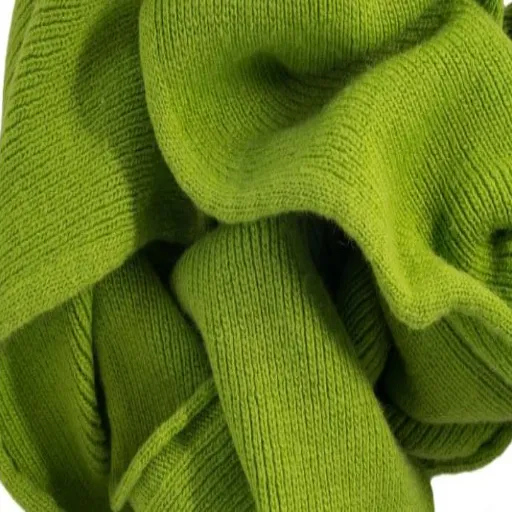
Acrylic fabric, a type of synthetic fabric, is made from polymers composed of acrylic acid or related compounds. It was created as a lightweight alternative to wool while maintaining softness and warmth. Acrylics are considered resilient because they withstand wrinkles, stains, and sunlight; hence, they are widely used in the manufacture of clothes, upholstery, and outdoor products. Its fibers are very flexible, woven or knitted into varied textures, thus favored chiefly for sweaters, blankets, and activewear.
How Acrylic is Made
The process of making acrylic fibers involves a series of complex steps. Polymerization is the initiation of the production, whereby a mixture of acrylonitrile monomers and other chemicals combines to form a polymer. The polymer is then dissolved in a solvent to prepare a viscous solution. This solution is forced through spinnerets, a set of very tiny holes, to attain very long and thin strands of the fiber. Depending on the specific requirements of the fiber, the strands are either wet- or dry-spun. Thereafter, the formation of the fiber is completed when they are stretched to improve strength, and then dyed if necessary. The fibers can subsequently be woven into various textiles or their applications extended to other areas to ensure durability, as well as softness and flexibility.
Common Applications of Acrylic Fabric
The acrylic fabric is widely used in various industries due to its high versatility, durability, and soft, wool-like feel. Some of the standard applications include:
- Manufacturing garments where warmth and comfort are essential, such as sweaters, scarves, and socks
- Activewear and outerwear are suitable due to their lightweight and fast-drying nature
- Home furnishings, such as upholsteries, curtains, and rugs, due to their resistance to fading
- Outdoor applications like awnings, patio furniture, and boat covers are due to weather resistance
- Industrial purposes, such as filters and non-woven fabrics
Stretchiness of Acrylic Fabric
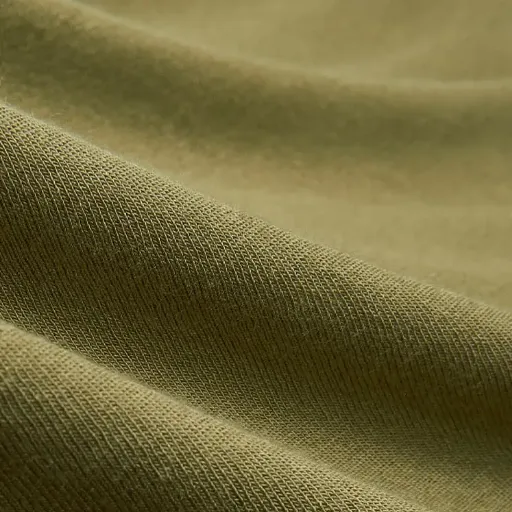
Generally, acrylic fabric lacks any stretch. The stretchability is entirely dependent on fiber blending and the exact fabric construction. If mixed with elastic fibers, such as spandex, and/or woven into specific patterns, some acrylics can stretch slightly. Alone, acrylic is quite stiff and relatively nonelastic.
Factors Influencing Stretch
Several key factors determine the stretchiness of acrylic fabric, especially when it is blended with other materials. These include:
Fiber Blends
When acrylic is blended with elastic fibers, such as spandex or elastane, these fabrics offer increased flexibility and stretch, making them suitable for applications in activewear and fitted garments.
Weave or Knit Pattern
The fabric structure is fundamental. Knitted acrylic fabric tends to be stretchier than woven fabric because the knitting action allows flexibility in the fabric.
Content Ratio
The amount of acrylic in comparison with elastic fibers in the mixture controls the degree of stretch. Fabrics containing more elastic fiber will tend to stretch out more.
Finishing Processes
These may include treatments applied during or after manufacturing, such as heat treatment or chemical finishing, which can impact the stretchability of the fabric.
Comparison with Wool and Other Materials
| Property | Acrylic | Wool |
|---|---|---|
| Origin | Synthetic (petroleum-based) | Natural (animal fleece) |
| Cost | More affordable | Generally more expensive |
| Breathability | Less breathable | More breathable |
| Durability | Resistant to moths, good color retention | Better abrasion resistance long term |
| Environmental Impact | Less sustainable production | Biodegradable and renewable |
| Moisture Management | Quick-drying, moisture-resistant | Better moisture wicking and temperature regulation |
This fiber is a synthetic wool-like alternative used for clothing, furnishings, and other applications due to its similarity in texture and insulating properties. According to the latest research, acrylic is chosen for its resistance to moth damage and affordability, while also possessing the conflicting ability to feel soft and warm like wool. However, it is less breathable compared to wool, and perhaps, in the long run, it also resists abrasion less well.
On the other hand, wool is best at wicking moisture and maintaining temperature, making it a suitable choice in a variety of air environments. It is also biodegradable and renewable, making it an environmentally friendly option. Acrylic fabric, albeit less sustainable in its production, offers a counterbalance through its inherent lightness and dyeability, which contribute to vibrant and flexible product design.
Each of these qualities should be considered when deciding between wool and acrylic based on their intended use. While wool would be the desirable material in performing well in cold weather, acrylic would provide a more budget-conscious, hypoallergenic alternative when it is used for lounging, casual wear, or decorative purposes.
Factors Affecting Acrylic Fabric’s Elasticity
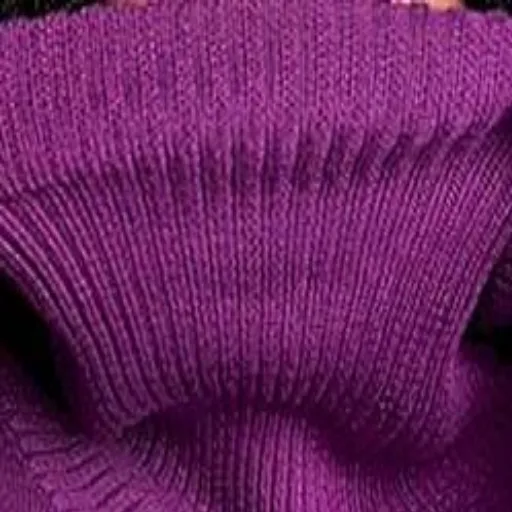
- Fiber Composition: Chemical structure and processing of the acrylic fibers explain why stretch and recovery differ within the fiber. Modified acrylic blends may possess slightly enhanced elasticity.
- Fabric Construction: Knitted acrylic is, due to its structural flexibility, more elastic than woven.
- Temperature Sensitivity: Due to its heat sensitivity, acrylic fabric can be affected in terms of its elasticity. Too much heat can weaken the fibers to the extent that they cannot regain their original shape.
- Finishing Treatments: Depending on their purpose, special finishing can either enhance or diminish the elasticity of acrylic fabrics.
- Wear and Tear: Through prolonged use or constant stress, fabrics lose their elasticity over time, particularly in areas that undergo frequent stretching.
Blends with Other Fibers
Improve the performance, durability, and overall functionality of acrylic textiles by blending them with other fibers. When mixed with natural fibers like cotton or wool, the blend is softer and warmer, yet the acrylic remains lightweight. On the other hand, mixing acrylic with synthetic fibers like polyester or nylon serves to increase its strength, abrasion resistance, and elasticity. These combinations render acrylic blends highly versatile, making them suitable for a wide range of usages, from clothing and upholstery to outdoor gear.
The ratio can be adjusted to incorporate other qualities such as moisture-wicking ability, breathability, or even anti-pilling properties. Textile technologies continue to explore new ways of blending acrylic with various fibers, thereby offering environmentally friendly fabrics that meet consumer demands.
Fabric Construction: Knitted vs. Woven Acrylic
Knitted Acrylic
- Stretchier and more flexible structure
- Suitable for comfort-focused apparel
- Ideal for sweaters, scarves, and activewear
- Manufactured by interlooping yarns
Woven Acrylic
- Stronger and more durable fabric
- Better for structural requirements
- Suitable for heavy-duty applications
- Made by interlacing yarns perpendicularly
The fundamental contrast between knitted and woven acrylic fabrics lies in their construction, performance, and suitability for specific end uses. Knitted or woven acrylic is used based on the particular application. For applications where softness and adaptability are primary concerns, knitted fabrics are well-suited. On the other hand, if heavy-duty and structural requirements are required, woven should be used. The continuous development of manufacturing methods has enabled a range of finishes and properties to be applied to both knitted and woven fabrics, allowing for the meeting of all consumer demands.
Uses of Acrylic Fabric in Clothing

Dyeing acrylic fabrics offers numerous applications in the garment industry, thanks to its versatility and direct practicality. Sweaters are the most popular; they lend warmth and feel much like wool but at a cheaper price. Socks, scarves, and hats provide durability and color retention. Besides these, acrylic fabrics rank highly among sportswear and outerwear due to their lightweight, moisture-resistant, and quick-drying properties, which keep one comfortable regardless of the weather.
Everyday Wear Examples
The acrylic cloth remains a popular choice for everyday wear due to its adaptability and reasonable price. Sometimes it is blended with other fibers to create soft yet sturdy fine-gauge sweaters or cardigans that are great for both casual and professional wardrobes. Other typical acrylic goods include hats and gloves that keep one warm while being light. In addition, acrylic is a component in activewear, such as leggings and jackets for cooler regions, which allows for a sweet balance between comfort and functionality.
Specialized Applications of Acrylic Fabric
Acrylic fabric has grown to fit various fields for their specialized purposes. One of these is outdoor performance gear. Sportswear and outdoor equipment, such as tents, sleeping bags, and thermal clothing, are often made from acrylic due to its moisture-wicking and insulating properties. These features ensure the durability and comfort of the product under harsh conditions.
In another application, acrylic finds its way into household items. Acrylic rugs are in high demand, alongside upholstery and curtains, for their brilliant colors, stain-resistant quality, and durable charm. Marine textiles, such as boat covers and awnings, also utilize acrylic fabric due to its resistance to UV degradation, water, and mildew.
In the arts, acrylic-based yarns are widely used for knitting and crocheting, while acrylic, in powdered form, is utilized as a 3D printing material. This flexibility demonstrates that the fabric meets quite specialized needs and, on the other hand, benefits from being lightweight, resistant, and versatile.
Practical Tips for Consumers and Designers

Tips for Consumers and Designers
- Choose the Right Material: When selecting acrylic fabrics, preference should be given to those specifically designed to be UV- and water-resistant, particularly for outdoor applications.
- Care Instructions: Follow the manufacturer’s cleaning instructions for optimal service and material longevity. Avoid using harsh chemicals that can cause gradual degradation.
- Budget Considerations: Research different brands and their products to strike a balance between quality and price. High-quality acrylic material may actually be your best long-term investment.
- Sustainability: Look for environmentally friendly acrylics or recycled materials to minimize adverse environmental impact.
- Use in Arts and Crafts: When using acrylic yarns or fillings for 3D printing, ensure they are compatible with your intended project for optimal results.
Advice for Consumers: Choosing the Right Acrylic Fabric
Evaluating a few key factors when selecting the best quality acrylic fabric is essential. First, consider the intended use of the fabric: for use on wood upholstery, clothing, or outdoor purposes. These applications require different grades or blends of acrylic. Always choose tightly woven or knitted fabrics, as they tend to offer greater durability and resistance to rough usage. Always check the UV resistance label for fabrics that will be exposed to prolonged sun, as many acrylic fabrics now have treatments to prevent fading. Additionally, select a fabric with low pilling characteristics and a soft yet sturdy feel for optimal comfort and extended lifespan. With all of this in mind, you will be able to make an informed choice that is tailored to your needs and provides value for money.
Designer Considerations When Using Acrylic Fabric
When incorporating acrylic fabrics into designs, it is essential to consider their versatility and adaptability. Concrete applications of acrylic fiber include upholstery, outdoor furnishings, and awnings, where durability and weather resistance are key considerations. Designers should also consider the fabric’s dyeability to achieve vibrant and long-lasting colors that resist fading over time. Proper construction, however, must be ensured, along with seam reinforcements, as under some circumstances, the tensile strength of acrylics may prove to be less than that of natural fibers. Skillful layering and blending with other materials can also enhance both functionality and aesthetic appeal, further recommending the material for use in both interior and exterior applications.
Care and Maintenance Tips for Acrylic Fabric
Regarding acrylic fabric care, I usually advise washing in warm water with a gentle detergent. I avoid high drying temperatures but instead use a low setting or air-dry. Stains are treated by gentle blotting; no harsh chemicals are applied, as these might interfere with the fibers. Proper treatment keeps the fabric durable and looking good.
Frequently Asked Questions (FAQs)
Is acrylic fabric stretchy?
Acrylic fabric is renowned for its stretchable properties, making it a popular choice for garments such as sweaters and activewear. Unlike natural fibers like wool, which can have limited elasticity, acrylic fibers can be blended with materials like spandex to enhance their stretchability.
What is acrylic fabric made of?
Acrylic fabric is a synthetic fiber made from a type of plastic derived from petroleum. This process involves polymerizing acrylonitrile, which is then spun into fibers used to create various fabrics, including those used in clothing and home textiles.
How does acrylic compare to wool?
When comparing acrylic to wool, it’s essential to note that acrylic is a synthetic material, while wool is a natural fiber. Acrylic fabric is generally easier to care for and resistant to shrinkage. It can mimic the warmth and moisture-wicking properties of wool without the itchiness that some people experience with natural wool.
Is acrylic fabric suitable for people with sensitive skin?
Acrylic fabric is generally safe for most individuals; however, some people with sensitive skin may experience allergic reactions to synthetic fibers. If you are prone to skin sensitivities, it’s advisable to perform a patch test or choose garments made from natural fibers such as cotton or wool.
Can washing acrylic cause shrinkage?
Washing acrylic fabric can potentially lead to shrinkage if high heat is used. To avoid this, it’s recommended to wash acrylic items in low heat settings and air-dry them when possible. This helps maintain the original size and shape of the fabric.
What are the benefits of acrylic?
The benefits of acrylic include its lightweight nature, vibrant color retention, and resistance to moths and mildew. Additionally, acrylic fabric is easy to care for and dries quickly, making it a practical choice for everyday wear.
Is cotton acrylic a good blend?
Cotton acrylic blends combine the breathability of cotton with the durability and stretch of acrylic. This combination can provide a comfortable fabric that is versatile for both casual and formal garments. It offers the softness of cotton without compromising on the stretch and resilience associated with acrylic fibers.
What are the cons of acrylic fabric?
While there are many advantages to using acrylic, some cons include its tendency to pill over time and the fact that it is derived from petroleum, which raises environmental concerns. Additionally, acrylic may not provide the same level of warmth as natural fabrics, such as wool, in colder climates.
How to care for acrylic fabrics?
To properly care for acrylic fabrics, it is best to wash them in cold or lukewarm water using a gentle cycle. Avoid using high heat in the dryer; instead, opt for air drying to prevent any potential shrinkage. This will help maintain the integrity and appearance of the acrylic fabric over time.
Where can I buy acrylic fabric?
You can buy acrylic fabric at various fabric stores, online retailers, and craft supply stores. When choosing between acrylic and other materials, such as wool or cotton, consider the specific needs of your project and your personal comfort preferences to find the best fit for you.
Reference Sources
Below are five professional and authoritative reference sources to verify the accuracy of this article about acrylic fabric stretchiness:
- MDPI – Recent Advancements in Acrylic Fabric Applications: A Comprehensive Review and Future Trends
This source offers a comprehensive review of developments in acrylic fiber, encompassing its properties and applications. - SAGE Journals – An Experimental Study of Some Comfort-Related Properties of Cotton–Acrylic Knitted Fabrics
This study examines the nylon-type properties related to comfort and stretch in cotton, acrylic, and cotton–acrylic blends. - Taylor & Francis – Studies on Cotton–Acrylic Bulked Yarns and Fabrics
This research investigates the characteristics of bulked fabric made from cotton–acrylic yarns, with a specific focus on elasticity. - Emerald Insight – Improving Some Functional Utility Properties of Garments Using Cross-Linked Acrylic Fabrics
This article aims to enhance the functional properties of treated acrylic fabrics, with a focus on elasticity and durability. - Google Books – Coated and Laminated Textiles
The book explores the tensile strength, stretch, and recovery properties of textiles, including those made from acrylic.








